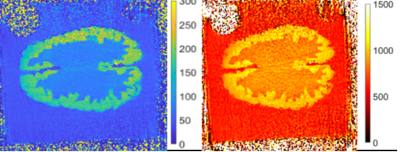Adriano Troia1, Umberto Zanovello1, Luca Zilberti1, Matteo Cencini2, Michela Tosetti2,3, David Kilian4, Martina Capozza5, Wolfgang Kilian6, and Tuğba Dışpınar Gezer7
1INRIM, Turin, Italy, 2IRCCS Stella Maris, Pisa, Italy, 3IMAGO7 Foundation, Pisa, Italy, 4Centre for Translational Bone, Joint and Soft Tissue Research, Faculty of Medicine and University Hospital TUD, Dresden, Germany, 5Department of Molecular Biotechnology and Health Sciences UNITO, Turin, Italy, 6Physikalisch-Technische Bundesanstalt, Braunschweig, Germany, 7National Metrology Institute, TUBITAK, Istanbul, Turkey
1INRIM, Turin, Italy, 2IRCCS Stella Maris, Pisa, Italy, 3IMAGO7 Foundation, Pisa, Italy, 4Centre for Translational Bone, Joint and Soft Tissue Research, Faculty of Medicine and University Hospital TUD, Dresden, Germany, 5Department of Molecular Biotechnology and Health Sciences UNITO, Turin, Italy, 6Physikalisch-Technische Bundesanstalt, Braunschweig, Germany, 7National Metrology Institute, TUBITAK, Istanbul, Turkey
Polysaccharides and polymers have been
used to realize heterogeneous phantoms in order to simulate white and
grey matter. Blend of Agar and Gellan Gum and GdCl3 have been used to tune T1 and T2 relaxation times. 3D printed moulds have been used to realize phantoms with brain-like structure.

Figure 2: Parametric
images of heterogeneous brain-like structured phantom measured at 1.5
T.For the reconstruction,K-space data was compressed as proposed by
McGivney et al. [3] and transformed to the image domain by using a
Non-Uniform Fourier Transform.M0/T1/T2 maps of the object were
computed using dot-product pattern matching with a dictionary of
signal evolution obtained using EPG formalism [4].

